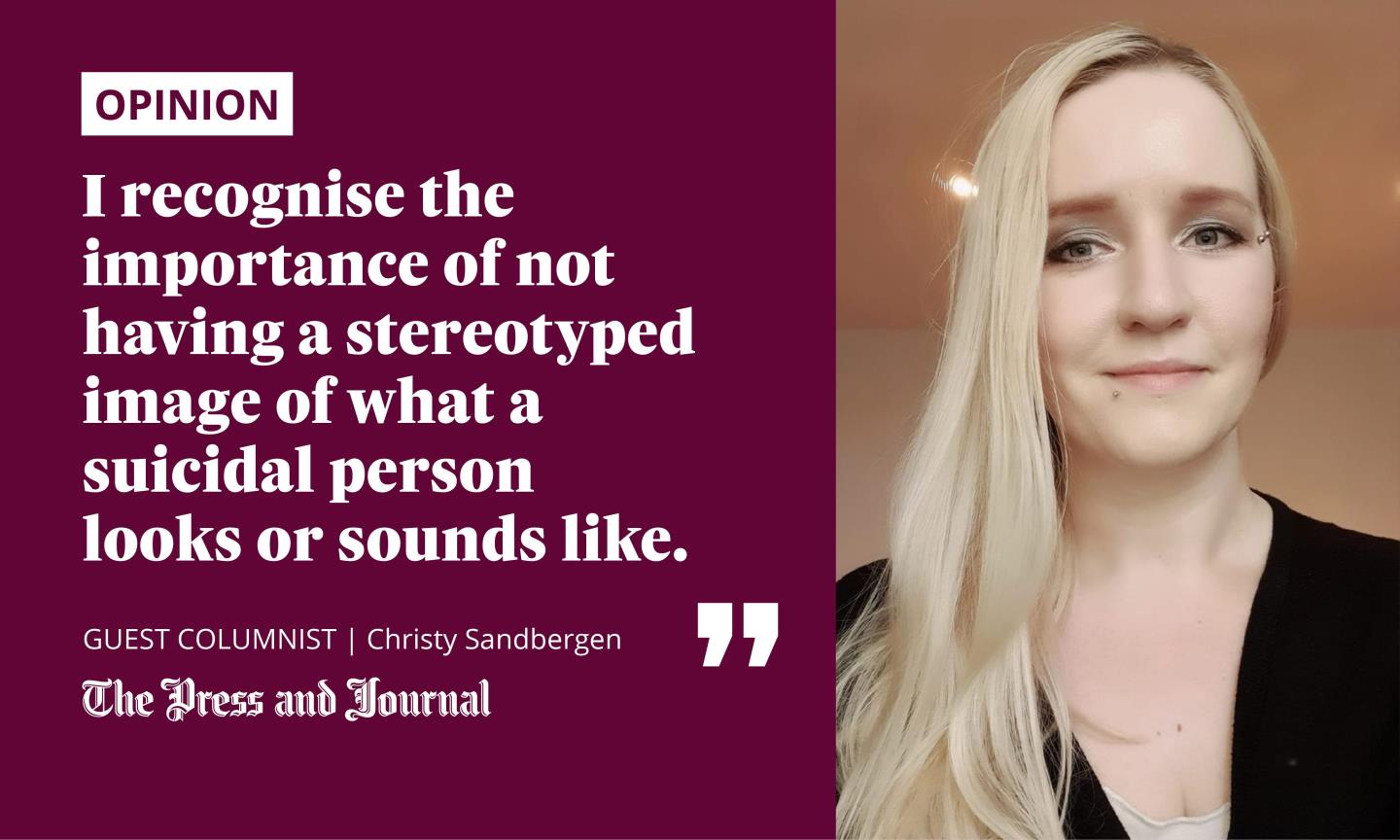For many, January evokes thoughts of fresh starts and new beginnings; yet the reality of cold, dark days and a return to routine can prove quite different.
This is why it’s as important as ever that we make the time to check in on our own and our loved ones’ mental health. It can feel like a scary thing to do but, believe me, talking really can make a huge difference.

In the Grampian area, we lose one person a week to suicide. SAMH (Scottish Association for Mental Health) works every day with partners across the north-east of Scotland – including Police Scotland, NHS Grampian and local authorities in Aberdeen, Aberdeenshire and Moray – to try to prevent suicide.
I’m part of the team working with that goal in mind – and it wasn’t chance that brought me to the profession.
I was ‘living the dream’ – but I was miserable
I’ve struggled with my mental health since I was a teenager, and in an attempt to cope, I turned to self-harm and disordered eating. Anxiety was “the devil I knew” – until a rather heartbreaking diagnosis of clinical depression when I was 20, which is really when I felt everything come crashing down.
At the time, I was studying on scholarship at one of the UK’s top music conservatoires, which had always been a dream of mine. But mental health problems do not discriminate and, although I was “living the dream”, I was utterly miserable and found myself experiencing suicidal thoughts daily. It was distressingly difficult to keep going.
Luckily, I was fortunate that someone at the conservatoire noticed something was wrong and took the time to ask me how I was. I opened up to them, and they were able to support me to access psychotherapy and start on medication.
My experiences ultimately led to a very tough decision to leave the conservatoire and, instead, study psychology. I think many are drawn to psychology in pursuit of answers, only to find themselves with more questions.
I had a strong desire to understand how people can come to find themselves in such dark places, and a hope that I may be able to help prevent others from feeling as terrified and alone as I once did.
Losing someone to suicide prompts a unique kind of grief
For nearly six years, I worked as a peer worker in self-harm services, using my own lived experiences to support others. Part of this role was to deliver self-harm awareness training, and later safeTALK – a suicide alertness course which I still give today.
I soon realised that, while I could relate to aspects of others’ stories, every individual has unique experiences and reasons for contemplating taking their own life. I recognised the importance of not having a stereotyped image of what a suicidal person looks or sounds like.
We are never alone, and I think that if we only spoke about suicide more, this would be better realised and felt by those struggling
Sadly, since working in the field I have lost both a client and a friend to suicide. I’ve found suicide loss to bring about a unique kind of emotional pain, with grief compounded by unanswerable questions and a belief that we should have somehow been able to prevent that person from taking their life.
We are never alone, and I think that if we only spoke about suicide more, this would be better realised and felt by those struggling. I feel really privileged to be able to do this in my job.
I don’t know where I’d be if someone hadn’t noticed my suffering
Working as a suicide prevention trainer for SAMH allows me to contribute to the broader work in the north-east, regularly engaging in open and honest conversations with other professionals about how we can work together to help prevent unnecessary deaths.
Alongside this role, I also work as a counselling and wellbeing coordinator at the Aberdeen Foyer, supervising the delivery of a community-based counselling service, where I see the benefits of talking every single day.
Have you heard about Time to Talk Day which takes place next month? It’s a chance for all of us to be more open about mental health – to talk, to listen, to change lives.
Find out how you can get involved on Thursday 3 February: https://t.co/lBFla0G399 @seemescotland pic.twitter.com/UH4MwBb1Fb
— SAMH (@SAMHtweets) January 12, 2022
Taking that first step to talk about your thoughts and feelings can be daunting and requires real courage. Many struggle to recognise that they would benefit from a little help, or feel that they aren’t worthy of the support.
Now, more than ever, I think it’s crucial that we look out for one another.
I don’t know where I would be without that staff member at the conservatoire inviting me into his office, showing an interest and offering compassion. Something so simple can genuinely make the world of difference – and trust me when I say that you do not need to be a trained therapist or have all the answers to start that conversation.
- For more information, visit samh.org.uk. If you are experiencing suicidal thoughts and need help now, you can contact the Samaritans 24/7, free of charge, on 116 123
Christy Sandbergen is a suicide prevention trainer for SAMH

